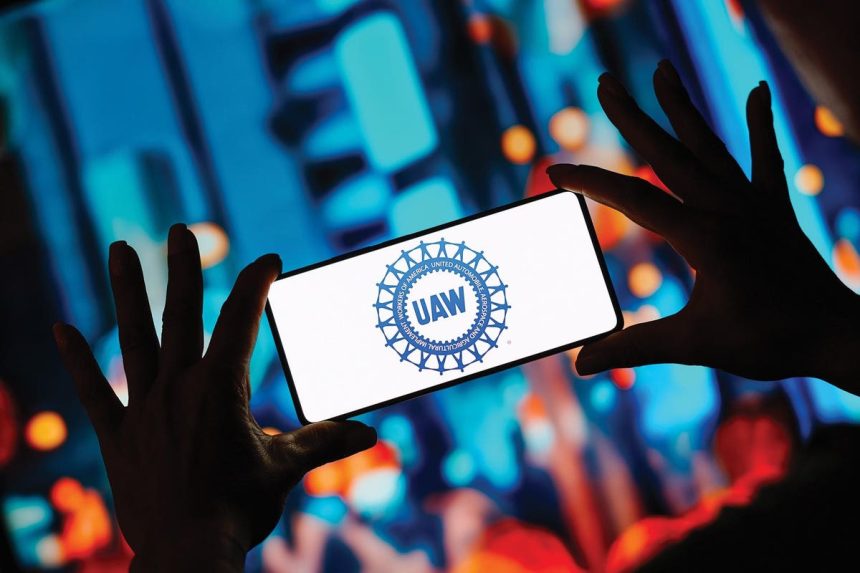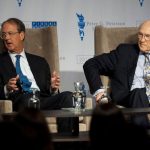On September 15, more than 12,000 autoworkers from the United Autoworkers Union (UAW) walked off the job as contract negotiations with Ford, GM, and Jeep-maker Stellantis have yet to produce a new contract for the 146,000 active union members at the three companies. UAW workers’ pay has increased just 6% since 2019, while the union cites a 40% jump in automotive CEO compensation from the Big 3 Detroit automakers. The UAW is therefore seeking a similar 36% pay increase over the next four years for its members, along with the return of pensions and other cost of living adjustments. While the automakers dispute the 40% figure, which is magnified by stock grants, there is no denying that the gap between executive compensation and rank-and-file wages has grown to a historically large differential.
In 1965, the CEOs from the largest 350 publicly traded companies outearned their median employee 15-to-1. Today, S&P 500 CEO pay is 186 times the median employee compensation. Meanwhile, GM’s CEO May Barra’s compensation amounts to 362 times the median GM employee’s annual wages, while Ford’s CEO James Farley earned more than 281 times the typical Ford autoworker. With the median US autoworker needing to work several lifetimes just to equal one year of CEO compensation, the UAW is pointing to the growing income inequality in the US and the decline of middle-class manufacturing jobs which can no longer support families on a single income.
The counterargument from the automotive industry is that CEO compensation is a relatively small budget item, and lower worker pay is needed to be competitive on the global market. To their point, workers at the 3 Detroit automakers make around $60 an hour including benefits, while non-union Tesla
TSLA
Does the UAW strike help or hurt the Fed’s fight against inflation?
The implications of the UAW strike on the economy are not insignificant and could become a major factor if the strike is expanded and prolonged. The Federal Reserve is undoubtedly watching the situation closely because it will impact both sides of the Fed’s dual mandate balancing act, which encompasses employment and price stability (inflation).
Unemployment has been historically low for some time, at under 4% since January 2022. The effect of the walkout will not show up immediately on unemployment statistics, since the union members will be counted as employed in the September jobs report. The strike will need to persist until October to count towards unemployment numbers, which will be reported the first week of November. With net payroll growth averaging around 150,000 per month over the three months ending in August, an expanded strike could possibly trigger the first net drop in US payrolls since December of 2020.
In terms of GDP output, the estimated cost of a month-long strike would be -0.2% of annualized GDP growth. The current 2023 real GDP estimate from the Conference Board is 2.2%, so it is highly unlikely that the strikes alone could produce a recession.
While it won’t publicly celebrate job losses, behind closed doors the Fed would likely welcome an uptick in unemployment to cool the economy. Striking UAW workers receive around $500 per week, far less than their regular wages. There is also collateral damage from the strike, such as the 600 Ford employees in the body construction department, who were temporarily laid off because their job function relies on prior steps completed by the striking UAW members. In addition to the Detroit autoworkers, prolonged plant shutdowns could trigger layoffs for affiliated suppliers and other connected businesses as well.
Of course, an agreement is likely to be reached eventually, which will reverse the layoffs and ultimately put upwards pressure on wage growth. Stellantis has already offered a 21% pay increase which was immediately rejected by the UAW, so the outcome should be closer to the UAW’s 40% ask. This means more upward wage pressure, something the Fed has been unable to halt with interest rate hikes. Higher wages translate to more discretionary spending power and create an inflationary feedback loop in which higher demand for goods and services pushes prices ever higher.
Aside from potential inflation from higher production costs, there could be a psychological inflationary impact, as consumers change behavior in anticipation of vehicle shortages. A scarcity of vehicles, real or perceived, will reduce the need for dealer incentives and allow non-union competitors like Toyota, Honda, and Tesla to increase prices. With the average new car price up over 22% since 2020 and the average new-car loan rate at just under 7.5%, the cost of vehicle ownership may rise considerably.
The net impact of the UAW strikes appears to help the Fed in the short term but ultimately will likely increase inflation in the long run. It is hard to begrudge the UAW for their demands, given that the average autoworker has seen their wages fall -19.3% since 2008 after adjusting for inflation. Unfortunately, the timing of the strikes may push the Fed back on the hawkish highway rather than taking the next exit.
Read the full article here




